New mushroom species are continually discovered, and researchers estimate that there are over 140,000 species of wild mushrooms worldwide, including around 3,000 that are edible.
Mycologists use several methods to classify these mushrooms and keep track of all the different species.
One common classification method looks at how mushrooms get their nutrition and what they eat. When classified in this way, there are four groups, and saprotrophic mushrooms are one of these.
Read on to learn what saprotrophic mushrooms are, how they get their food and why they’re so important for the environment.
You’ll also find examples of common saprotrophic mushrooms and answers to several saprotrophic mushroom questions.
What Are Saprotrophic Mushrooms?
Saprotrophic mushrooms are the fruiting bodies of fungi that live and feed on dead and decaying organic matter.
Saprotrophic has Greek roots and comes from “sapros” meaning rotten or putrid, and “trophe” meaning nourishment or food.
Saprotrophic fungi facilitate the decomposition of organic matter and play a vital role in natural ecosystems.
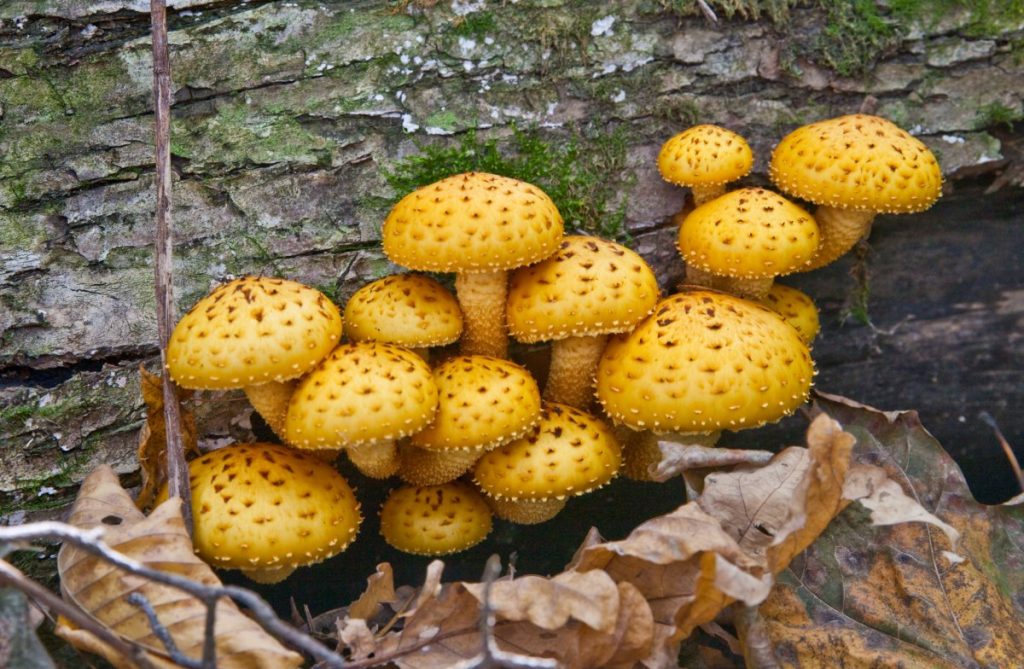
Are all Fungi Saprotrophic?
Not all fungi are saprotrophic, but, like humans, all fungi are heterotrophic.
Heterotrophs are organisms that can’t produce their own food and get the nutrients they need from the environment around them.
Fungi use various methods to get these nutrients and, when classified based on these methods, fall into four categories:
- Saprotrophic
- Mycorrhizal
- Parasitic
- Endophytic
Saprotrophic fungi are the largest group, and many popular gourmet mushrooms are saprotrophs.
Are all Mushrooms Saprotrophs?
No, not all mushrooms are saprotrophs.
Although many well known mushrooms are the fruiting bodies of saprotrophic fungi, mycorrhizal and parasitic fungi also produce mushrooms.
Our article, “What Do Mushrooms Eat? The Answer May Surprise You!” has more information and examples of the different types of mushrooms.
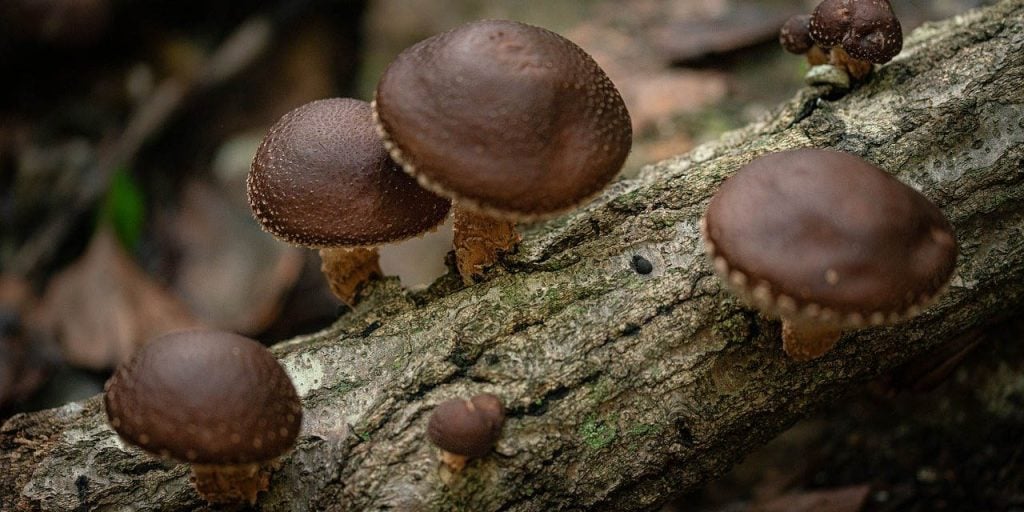
What do Saprotrophic Fungi Eat?
Saprotrophic fungi get the nutrients they need from a wide range of dead and decaying organic matter.
Unlike humans, who digest their food internally, fungi digest matter externally and feed using a process called absorptive nutrition.
To do this, saprotrophs release enzymes into the nonliving organic matter around them. These enzymes break the organic compounds into smaller, simpler molecules that the fungi can absorb.
Saprotrophic fungi feed on different types of organic matter and can be broadly grouped as wood decay fungi or litter decomposers.
But, within these broad categories, there are variations and not only do different species feed on specific organic materials, they also grow on matter that’s at different stages of decomposition.
Some saprotrophs are secondary decomposers that grow on well-composted organic material. Well-known examples of these are the common button, cremini and portabella mushrooms.
Wood Decay Fungi
Wood decay fungi are one of the few organisms that can break down lignin, a complex organic polymer found in plant cell walls that provides stiffness and strength.
As you can imagine, trees need a lot of support to grow so big, and this means that wood primarily consists of cellulose and lignin.
Some wood decay fungi are primary decomposers that colonize newly dead or just-cut trees and start the decomposition process.
The most efficient wood-decaying fungi are the type that produce mushrooms.
And the species that feed on large decaying logs and stumps have some of the largest fruiting bodies of all fungi.
Wood decay fungi produce many well-known gourmet and medicinal mushrooms, including oyster, shiitake, reishi and turkey tail mushrooms.

Litter Decomposers
Litter decomposers feed on fallen leaves and other plant matter and are often found growing in woods, forests and backyards.
Leaf litter is usually made up of a mixture of plant matter and provides a rich source of cellulose and other nutritious materials.
Wine cap mushrooms are an example of litter decomposers and they thrive in leaf litter with bits of decomposing wood.
The good news is they’re not difficult to cultivate and you can grow these delicious wine cap mushrooms outdoors in a mushroom bed.
What is the Difference Between Saprophytic and Saprotrophic?
Sometimes people describe mushrooms as being saprophytic, but they’re often also described as saprotrophic. So what’s the difference, and are they both of these?
Scientists use the word saprotrophic to describe the group of organisms that use a method of nutrition that involves feeding on dead and decaying organic matter.
And they call organisms, including fungi and bacteria, that use this method of nutrition saprotrophs.
There are two kinds of saprotrophs, those that feed on dead plants and those that feed on dead animals.
Saprotrophs that feed on dead and decaying plant material are called saprophytic and those that consume dead and decaying animal matter are called saprozoic.
Thus it is correct to describe mushrooms that feed on dead plant matter as saprophytic and saprotrophic.
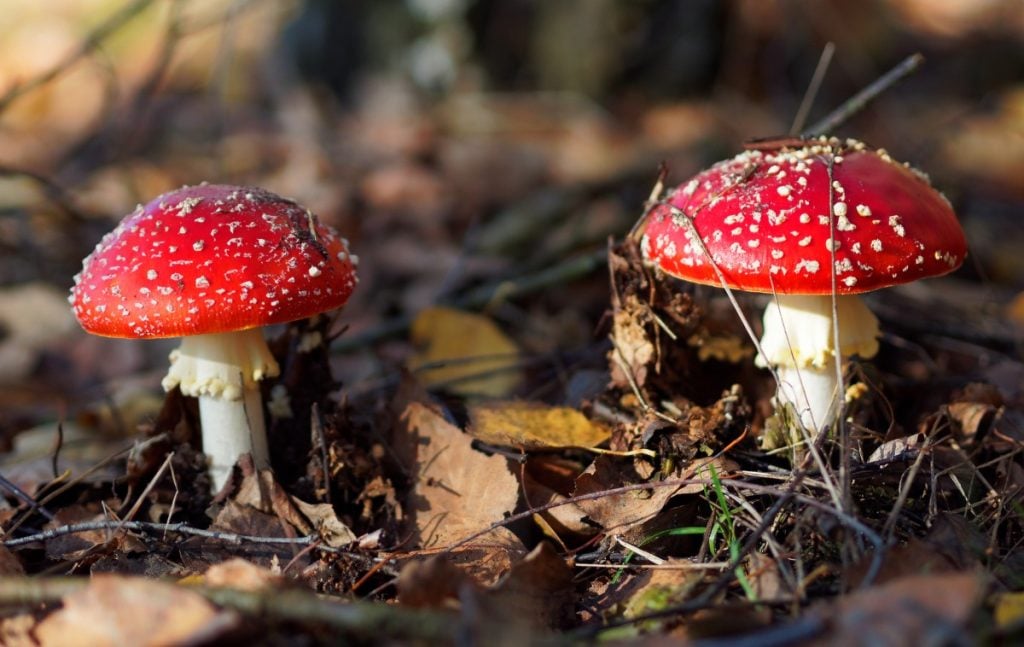
What is the Difference Between Parasitic Fungi and Saprotrophic Fungi?
The main difference between parasitic and saprotrophic fungi is how they get their nutrients.
Saprotrophic fungi get their nutrients from dead and decaying organic matter, while parasitic fungi get their nutrients from living organisms.
Saprotrophs are important decomposers and beneficial to the ecosystem around them.
Parasites, however, are dependent on a living host for survival and aren’t always beneficial as they often harm the host organism.
Why Are Saprotrophic Mushrooms Important?
Saprotrophic mushrooms play a crucial role in ecosystem nutrient cycles as they convert complex organic materials into simple compounds that plants and other organisms can easily absorb.
Without saprotrophic fungi, falling trees would create woodpiles, and there would be no nutrients to replenish the soil for future generations of plants.
Many saprotrophic mushrooms are primary decomposers, and breaking down woody material is their specialty.
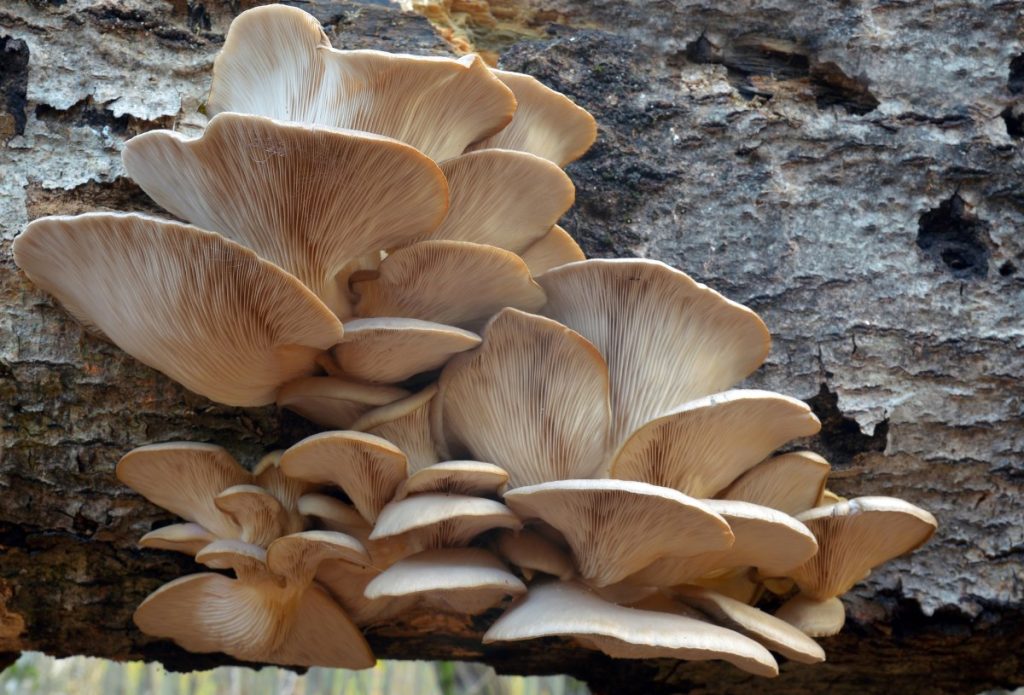
Are Saprotrophic Mushrooms Edible?
Many saprotrophic mushrooms are edible. Some are expensive, sought-after gourmet mushrooms, and others are common mushrooms that farmers cultivate worldwide.
But, just because a mushroom is saprotrophic does not mean it’s edible.
Never assume a mushroom is edible because it’s growing on dead wood or leaf litter.
Only eat mushrooms that you have identified as safe with the help of a mushroom identification app or an experienced forager.
Can you Grow Saprotrophic Mushrooms at Home?
Yes, you can grow saprotrophic mushrooms at home, and some of the easiest mushroom species to grow are saprotrophs.
One of the reasons they’re easy to grow is the fact that they feed on dead and decaying organic matter that mushroom growers can provide.
Cultivating mycorrhizal or parasitic mushrooms is much more difficult as they need other living host organisms to grow.
Some of the most forgiving saprotroph mushroom species for new mushroom growers are oyster mushrooms.
They’re perfect for beginners because they’re hardy and grow on a wide range of substrates, including straw, sawdust, cardboard, coffee grounds and other agricultural byproducts.
If you’re a first time mushroom grower, we recommend starting with an oyster mushroom grow kit.
And, once you have some experience and have successfully harvested mushrooms from grow kits, you can move on to the next phase and make your own fruiting blocks.
Common Saprotrophic Mushrooms
Some of the most well-known mushroom species are saprotrophs, including many common grocery store mushrooms.
And saprotrophic fungi don’t only produce delicious gourmet mushrooms; they also provide medicinal mushrooms full of beneficial compounds.
Here are a few common saprotrophic mushrooms:
- Oyster – Oyster mushrooms are popular, easy-to-grow edible mushrooms and one of our favorite species.
- Shiitake – Shiitake mushrooms have a delicious umami taste and medicinal properties and have been a staple ingredient in Asian cuisine for centuries.
- Button – Button mushrooms are one of the most widely consumed mushrooms worldwide, and you’ll find these versatile mushrooms in most supermarkets.
- Cremini – Cremini mushrooms are the same species as button mushrooms but slightly older with more pronounced flavors.
- Reishi – Reishi mushrooms are potent medicinal mushrooms that the Chinese have used for thousands of years.
- Maitake – Maitake mushrooms, also known as hen of the woods, are sought after for their medicinal properties and culinary uses.
- Turkey tail – Turkey tail mushrooms are well-studied medicinal mushrooms that are too tough to eat, so they’re used in the form of tea to treat many conditions.
- Giant puffball – Puffball mushrooms taste good but are only edible when young. They look different as they don’t have gills and stems like most other mushrooms.
- Shaggy mane – Shaggy mane mushrooms are a common sight in parks and gardens and, like puffballs, are only edible when young. When mature, they auto-digest and liquefy their caps and gills, creating a black goo that drips to the ground.
- Black trumpet – Black trumpet mushrooms are some of the best-tasting wild mushrooms and a favorite with mushroom foragers.
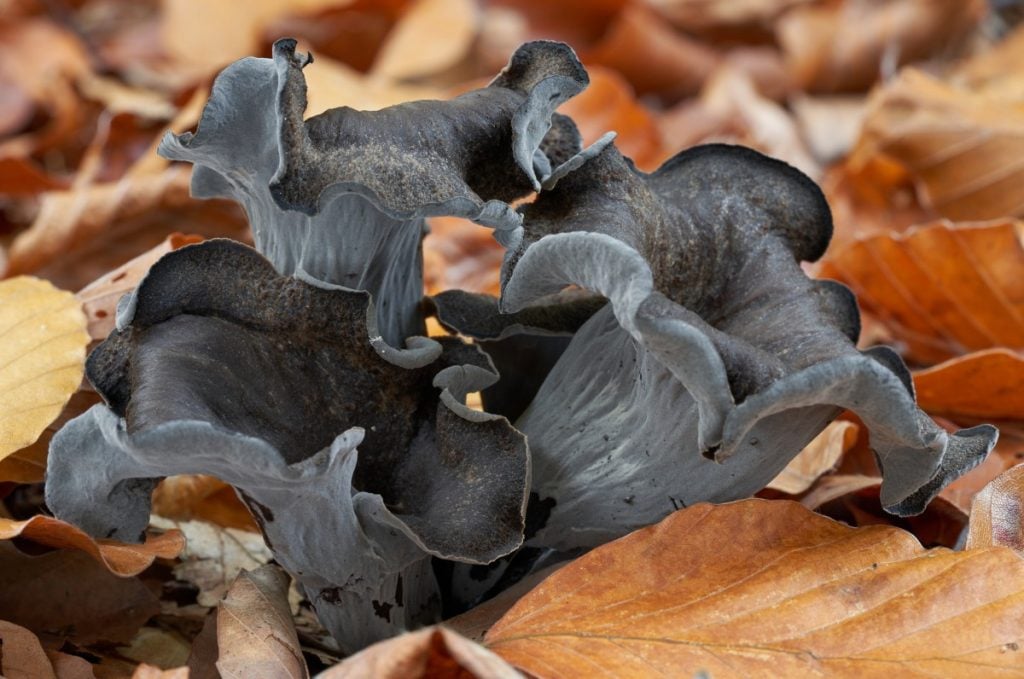
Final Thoughts
Saprotrophic mushrooms play a crucial role in the nutrient cycle as primary and secondary decomposers and ecosystems would fail without them.
They can’t produce their own food, so they get the nutrients they need from the dead and decaying organic matter around them.
Saprotrophic fungi produce some of the largest fruiting bodies of all fungi, and many of the mushrooms we know and enjoy are saprotrophs.
You can grow saprotrophic mushrooms at home, and knowing how they get their nutrients helps you understand what’s happening during colonization.
To learn more about mushroom growing, visit our Mushroom Growing Hub or sign up for one of our mushroom cultivation courses.
